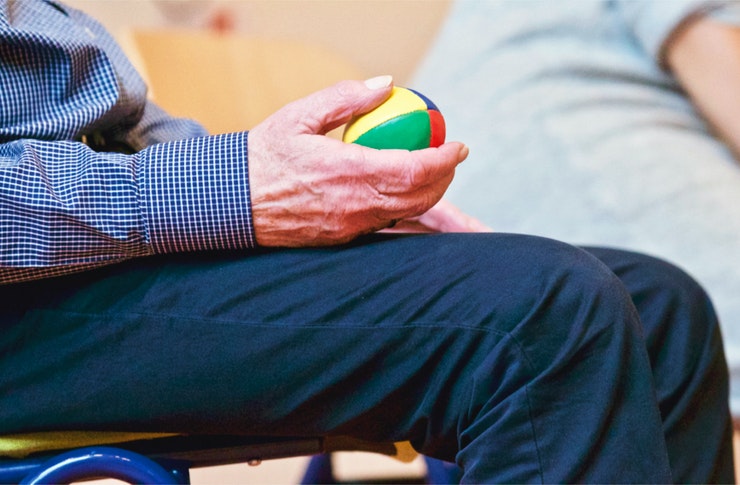Bursitis Treatment Options and Considerations
Bursitis is inflammation of a bursa — a small, fluid-filled sac that reduces friction between tissues such as bone, tendon and skin. It commonly affects joints like the hip, shoulder and knee, causing localized pain, stiffness and reduced range of motion. Symptoms can develop suddenly or gradually and often worsen with repetitive movement or pressure. Understanding conservative options, activity modifications and when to consider more invasive care can help people manage symptoms and maintain mobility, especially when walking becomes painful or when older adults are affected.

This article is for informational purposes only and should not be considered medical advice. Please consult a qualified healthcare professional for personalized guidance and treatment.
What is bursitis and how does it develop?
Bursitis occurs when a bursa becomes irritated or inflamed, often from repetitive motion, prolonged pressure, injury, or underlying inflammatory conditions. Microtrauma from activities like kneeling, lifting, or prolonged walking can trigger inflammation. Infection (septic bursitis) is less common but requires prompt medical attention. Diagnosis usually begins with clinical exam and history; providers may use imaging such as ultrasound or MRI to rule out tendon tears or other joint pathology. Identifying the activity or biomechanical issue that started the problem is important to guide effective treatment and prevent recurrence.
How does walking affect bursitis symptoms?
Walking can both aggravate and help some types of bursitis depending on severity and cause. When hip or knee bursae are inflamed, each step may increase friction or pressure on the bursa, causing sharp or aching pain and altered gait patterns. Conversely, gentle, controlled walking with proper footwear and posture can aid circulation and reduce stiffness. Gradual activity modification—shorter walks, flatter surfaces, supportive shoes, or temporary use of a cane—can reduce strain while preserving mobility. A physical therapist can assess gait mechanics to suggest changes that limit bursal irritation.
How does hip bursitis affect the elderly?
Hip bursitis is common in older adults because age-related changes—weaker muscles, altered gait, joint degeneration, and decreased tissue elasticity—make the hip more susceptible to friction and overload. In the elderly, pain can lead to reduced activity, increasing fall risk and loss of independence. Comorbidities such as osteoarthritis or diabetes can complicate recovery and increase the chance of prolonged symptoms. Treatment for older patients often emphasizes safe, low-impact exercise, balance training, and adaptations in the home or footwear. Coordination with primary care and local services can ensure appropriate monitoring and support.
When is surgery considered for bursitis?
Surgery is a later option, generally reserved for cases unresponsive to conservative therapies after several months, or when there is structural damage, recurrent bursitis, or septic bursitis that doesn’t respond to antibiotics and drainage. Common surgical procedures include bursectomy (removal of the inflamed bursa), repair of damaged tendons, or addressing underlying bone spurs that contribute to friction. Risks include infection, nerve injury, stiffness and recovery-related limitations. Outcomes vary by procedure and patient health; older adults may require more time for recovery and careful preoperative assessment to weigh benefits against surgical risks.
What non-surgical treatments and prevention steps are effective?
Most bursitis responds to non-surgical care: rest and activity modification, cold or heat therapy, over-the-counter anti-inflammatory medications as advised by a clinician, and targeted physical therapy to strengthen surrounding muscles and correct biomechanical issues. Corticosteroid injections into the bursa can provide faster relief for persistent inflammation but are used selectively. Weight management, ergonomic adjustments (padding for kneeling, cushioned seating), and progressive exercise can prevent recurrence. For persistent or unusual symptoms, medical evaluation is important to exclude infection or other joint pathology. Working with local services such as primary care, orthopedics, or physical therapy clinics in your area can help coordinate a personalized plan.
Conclusion
Bursitis is often manageable using a stepwise approach that begins with conservative measures and progresses to more invasive options only when necessary. Recognizing the role of activities such as walking, addressing biomechanical contributors, and tailoring care for populations like the elderly can improve outcomes and preserve function. When pain persists, imaging or specialist assessment may clarify whether procedures such as bursectomy are appropriate. Ongoing preventive strategies—strengthening, proper footwear, and activity modification—help reduce recurrence and support long-term mobility.






